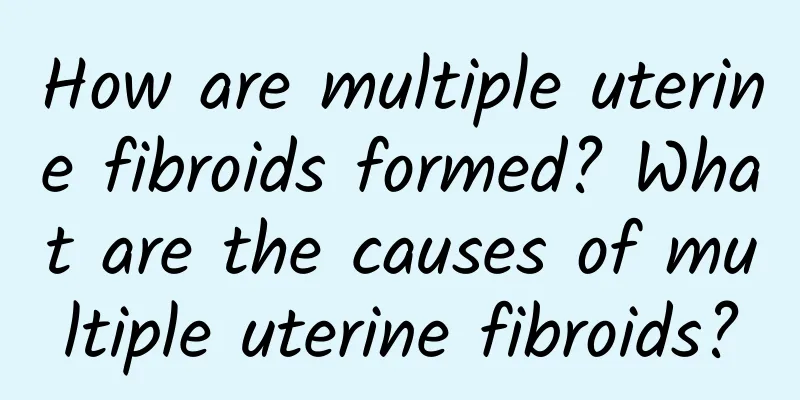How are multiple uterine fibroids formed? What are the causes of multiple uterine fibroids?

|
Uterine fibroids are common benign tumors in the reproductive system, which are more common between the ages of 35 and 50. They are very important to the lives and work of female friends. So, do you know what the causes of multiple uterine fibroids are? What are the effects of uterine fibroids? Uterine fibroids are usually multiple, and different types of fibroids can occur in the same uterus at the same time, which is called multiple uterine fibroids. The causes of multiple uterine fibroids are as follows: 1. Multiple uterine fibroids are often complicated by endometrial hyperplasia; 2. Patients with ovarian granulosa cell tumor and theca cell tumor (which can secrete estrogen) often have uterine fibroids; 3. During pregnancy, estrogen levels increase and fibroids grow rapidly; 4. Exogenous estrogen can accelerate the growth of fibroids; 5. Multiple uterine fibroids appear in women after menarche, which are more common in middle-aged women. After menopause, the fibroids stop growing and gradually shrink. If uterine fibroids continue to grow, the chance of malignancy will gradually increase. If not treated in time, it may even cause the following hazards: 1. Secondary anemia: Uterine fibroids can cause excessive menstrual bleeding. Over time, it can lead to secondary anemia and even anemic heart disease. In severe cases, patients may experience general fatigue, pale complexion, palpitations, shortness of breath and other adverse symptoms. 2. Adhesion or inflammation: After the subserosal uterine fibroid pedicle is twisted, intestinal adhesion will occur, and then it will be infected by intestinal bacteria. Inflammatory fibroids will adhere to the uterine appendages, causing suppurative inflammation. On the other hand, fibroids can also cause bacteria to invade other uterine organs, causing gynecological inflammation such as adnexitis and pelvic inflammatory disease. 3. Infection and suppuration: Uterine fibroids can cause pelvic congestion and infection. The infection is mainly caused by the torsion of the tumor pedicle, while hematogenous infection is extremely rare. After infection, a few patients develop abscesses in the tumor tissue, while the rest show suppuration. Uterine fibroids are very harmful to women's physical and mental health. Women must prevent gynecological diseases such as uterine fibroids in their daily lives. |
<<: Symptoms of multiple uterine fibroids What are the complications of multiple uterine fibroids
>>: Anemia in women is caused by multiple uterine fibroids.
Recommend
Which hospital is best for treating ovarian cysts?
Ovarian cysts are common gynecological diseases. ...
Will adnexitis be inherited by the next generation?
With the development of the social environment an...
How to treat multiple uterine fibroids How to use medication for multiple uterine fibroids
Treatment of multiple uterine fibroids. Uterine f...
What does hyperprolactinemia mean?
Hyperprolactinemia is the most common pituitary d...
Daily prevention tips for acute pelvic inflammatory disease
Before the treatment of acute pelvic inflammatory...
Abdominal pain in the first few days after intercourse in ectopic pregnancy
Ectopic pregnancy is clinically called ectopic pr...
Japanese resident Harada Rei died of cervical cancer! Nutritionist reveals: 3 reasons why you must eat soybeans to fight cervical cancer
Cervical cancer is the cancer killer among women!...
Analysis of the most important early symptoms of ectopic pregnancy in clinical practice
Ectopic pregnancy is a common disease in daily li...
What are the causes of anemia in women? Anemia in women may be caused by multiple uterine fibroids
Many diseases themselves are highly hidden, or in...
The cause of vulvar leukoplakia can cause local nerve and blood vessel damage
Modern women are under too much pressure in life,...
Treatment of vulvar leukoplakia with Chinese medicine for internal and external use
Vulvar leukoplakia is a localized or diffuse whit...
Maternal and Child Health Hospital Abortion Price List
The price list of abortion in maternal and child ...
Experts introduce you to the classification of irregular menstruation
In life, more and more people suffer from irregul...
Thirteen major treatment issues for uterine fibroids
With the development of society, uterine fibroids...
What does uterine fibroids look like? What are the dangers of uterine fibroids?
Many female friends suffer from uterine fibroids,...









